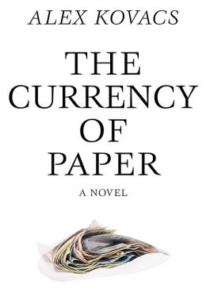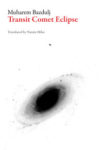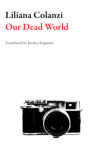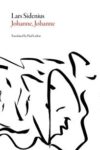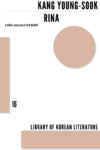Referring to a work of fiction as a “novel of ideas” is often a kind of thinly-veiled warning to a certain type of reader: the novel in question is one that focuses unapologetically on the thoughts and ideas of its characters or its writer; it is not “about” — or perhaps eschews completely — common conventions of plot and narrative development. In short, the “novel of ideas” often risks being, for some, boring. The phrase often pops up in blurbs on the back of hefty classics: The Man Without Qualities, In Search of Lost Time, pretty much any Dostoevsky. Alex Kovacs’ debut novel, The Currency of Paper is certainly a “novel of ideas,” albeit in a more literal sense.
The novel is the story of a single character, the quite consciously named Maximilian Sacheverell Hollingsworth, whose entire existence is dedicated to the cultivation and implementation of ideas. The novel alternates between fairly straightforward chapters in which Maximilian’s various projects are described (written, as one chapter title describes, “in the Mode of Realism”) and more formally experimental chapters that range from an essay written by the protagonist on the human condition in a late-capitalist world to the transcription of a song, busked by the narrator, complete with chord changes and guitar tabs. The oscillation in style of The Currency of Paper — and the artistic vision of its protagonist — could be described as a kind of deft combination of a Borgesian interest in thought experiments and the formal playfulness of Raymond Queneau and other OuLiPo luminaries. Taken as a whole, The Currency of Paper represents a kind of encyclopedia of the ideas of one person, an exhaustive chronicle of his creative pursuits and ambitions.
The novel begins in London, 1950, just as Maximilian has decided to devote his life to the kind of projects that are described throughout the remainder of the text. He first describes the impetus of his actions as a desire to dictate “the entire course of his life on a single day.” This desire stems not only from Maximilian’s distaste with the economic system in place in industrial England but also, on a more basic level, from his desire to be “free.” Discovering freedom — or nuancing a working, useful definition for freedom — seems to be Maximilian’s main concern throughout much of the novel. Early on, Maximilian seems to settle for freedom as a kind of sovereignty a la Georges Bataille: he only seems to feel free when he is pursuing projects with no clear end outside of themselves, projects that transgress established norms without any external “benefit” or even “effect” on anyone but himself.
The resulting projects are essentially individualistic and clandestine: the building of an enormous time-measuring sculpture in an otherwise empty and never-visited warehouse, or the creation of an enormously long film composed solely with the intention of creating “a compendium of other possible films, a catalogue of styles and approaches.” But his idea of freedom eventually becomes something to share: in order to be free he must improve the lives of others, provide for them the means of becoming free themselves. To do this, Maximilian performs acts of détournment, repurposing advertisements and billboards throughout London. In his relationship to freedom, Maximilian’s connections to the oulipian project is clear: the oulipian writer or artist tries to find creativity through constraint, and Maximilian takes that one logical step further — he attempts to find freedom in constraint. Thus, his life as a whole ends up structured as a massive exercise in constraint, a project envisioned and carried out from a definable and stable point of origin.
While Maximilian’s projects seem to stem from a desire to experience or work out the meaning of freedom, the philosophical or critical implications of his endeavors do not end there. In particular, Maximilian seems quite enamored with exploring in his work notions of the infinite. In one of his few face-to-face conversations with another human being, Maximilian suggests to his companion that one way to emerge from depression may be to attempt to contemplate the infinite, by way of considering the proliferation of a given object: “He suggested that when one sat at a table it was possible to consider every table in the world, as well as every person who sat at every table, their vast variety of appearances and mannerisms.” Another early chapter, “Aspirations to a Complete Inventory,” simply enumerates a number of Maximilian’s “experiences” for a given year, starting with “3 badminton tournaments attended with mild curiosity,” and ending with “5287781 things impossible to analyze with absolute precision.” Here we see at work Maximilian’s insatiable appetite for expressions of the infinite, whether quotidian or sublime.
The very first project that Maximilian undertakes, however, essentially allows him to pursue the implementation of his ever-expanding stable of ideas, allows him to be “free.” From the first chapter to the last, Maximilian is responsible for the mass production of counterfeit currency. Money is central to The Currency of Paper, in fact, starting with the novel’s epigraph: Marx’s description of labor and alienation from The Economic and Philosophic Manuscripts of 1844, which concludes: “External labour, labour in which man alienates himself, is a labour of self-sacrifice, of mortification.” Throughout the novel and Maximilian’s life, money is never “an issue;” he can always print more. His counterfeits are, as far as the reader can tell, perfect and untraceable. He is therefore “free” to pursue the artistic and philanthropic desires (though he describes himself at one point as a misanthrope) that he wishes. He is free to start a radio station composed entirely of environmental sounds, free to experiment as a secret benefactor for a variety of small business ventures around London.
One of the strangest and most apparently random projects undertaken by Maximilian is the collection of paper napkins. The collection begins by chance, when Maximilian discovers, blowing in the wind, a napkin with a grocery list written on it. This find spurs Maximilian to start gathering all of the written-on napkins he can find, with the hopes of stumbling on the work of “some genius toiling in obscurity, inscribing napkins with brilliant asides before throwing them to the winds, for the delectations of who knows what audience.” After becoming disillusioned with this hunt for self-discovery (for what is Maximilian but a self-styled “genius toiling in obscurity”), the protagonist begins to collect blank napkins. Here, the narrative jumps into one of the novel’s most trenchant and developed critiques of consumer culture, centered, impressively, on the image and form of the blank napkin:
Furthermore, Maximilian was taken with the fragility of the paper napkin…they seemed to him such tentative objects, always on the brink of extinction. Reproduced infinitely, identically, they were taken for granted by everyone living within advanced industrial economies. Their presence was thought to be as natural and inevitable as that of water or air, but this was of course an illusion: they were made, and many resources were taken up with their manufacture, only for them to be disposed of without a second thought
In sections like these, Maximilian — and Kovacs — display a genuine knack for approaching the quotidian with a keen theoretical and essayistic eye: this fragmentary, formally schizophrenic novel is often at its best when it slows down and takes a close look at a given image or object. The napkin project also illustrates nicely a tension central to Maximilian’s hoarder/completionist desires: that between the attraction to the encyclopedic or exhaustive and the belief in the essential ephemerality of existence, in the impossibility and intolerability of the total. Maximilian’s napkin collection begins with a cautious optimism and, like most of his projects, ends in the dissolution of hope, the triumph of boredom, and the realization that “he [will] need to look elsewhere for his ecstasies.”
While all of Maximilian’s attempts at finding freedom or ecstasy are described in a fairly flat and straightforward tone, the relationship between the author, the narrator, and Maximilian is perhaps not as simple as it first appears. The language of the narrator usually sticks to “the mode of realism” in that it describes his actions either without ornament, in pure third person, or in close third, giving room to Maximilian’s thoughts and justifications for his sometimes bizarre or initially hard to understand actions and desires. With what attitude is the narrator of the novel describing Maximilian’s actions, though, to what end? There is a sense lurking throughout that Maximilian is not to be understood as a “pure” artist par excellence but instead as tragically lonely and delusional figure.
One of the last chapters of the book describes Maximilian’s seventieth birthday, which he celebrates with the same oulipian, rule-based verve as he approaches any of his other endeavors. (He also experiences sexuality in a similar way: the two chapters that describe — in predictably bizarre detail — Maximilian’s sexual experiences are two of the most jarring in the novel.) Although the methodology is the same — to set for oneself rules or obstructions and to go forth in accordance with them — approaching the celebration of his birthday with a kind of Sol LeWitt-like addiction to rules and order yields disastrous results (from the point of view, of course, of the remainder of society, outside of Maximilian’s hermetically sovereign worldview). Maximilian appears in this chapter as more dangerous than eccentric, more physically threatening than intellectually explorative. He is, at seventy, an old man who appears depressing in his devotion to naiveté.
This chapter made more palpable to me a sentiment that floats beneath the novel’s many oulipian formal tricks and anti-capitalist thought experiments. As I read through The Currency of Paper, I often had a creeping feeling that I was falling for a kind of joke: that, if I were not already predisposed to like the kind of strange artworks and experiments that Maximilian constantly and obsessively attempts, I would perhaps see in him less Georges Perec and more derivative MFA student, less sharp social critic and more navel-gazing, misguided faux-philanthropist. There are moments in which the epigraph, instead of acting as an explanation for Maximilian’s originary disdain for capitalism, morphs instead into a description of his constant state of being: he has pursued the production of art to such a degree that his actions have become automated, he has become alienated from himself through artwork. But if Kovacs is to be read as an ironist, he is an exceedingly subtle one. In any case, The Currency Paper is a novel absolutely brimming with ideas, both realized an unrealized, the sheer number and often depth of which are enough to keep Maximilian’s obsession both entertaining and, for some, intellectually invigorating.
This post may contain affiliate links.



